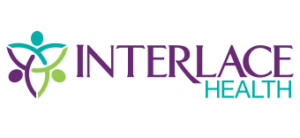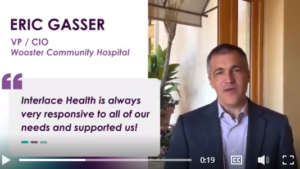Being Prepared for Downtime Events in Healthcare

Electronic health records (EHRs) are used at most hospitals around the world, and downtime events, whether planned or unplanned, are unfortunately inevitable and common. These events can directly impact patient safety, revenue, staff productivity, and the patient experience.
Unplanned downtime can also have a devasting impact on finances. With each added minute, an idle EHR can dramatically impair the functionality of your hospital and, on average, cost an incredible $8,662 per minute.
According to the HIPAA Security Rule, hospitals must prepare a contingency plan for each type of foreseeable disaster, including natural disasters, fires, vandalism, system failures, ransomware incidents, and as we’ve seen sweeping headlines this year: cyberattacks.
HIPAA’s primary concern is that hospitals return to normal operations as quickly as possible and that the confidentiality, integrity, and availability of private health information (PHI) is safeguarded.
Why you can’t afford to be unprepared
Downtime events are a particularly risky time for patients as patient information and critical EHR functionality are unavailable. These downtime dysfunctions can often result in delayed or suboptimal care. In fact, a JAMIA report reported that 49% of downtime errors were due to inappropriate labeling by the lab or positive patient identification (PPID), which led to unnecessary redraws. Another 13% of errors were related to a general delay in care, which can impact patient and staff satisfaction.
Healthcare organizations averaged a whopping 18.7 days of downtime in 2023 (*Infosecurity Magazine). If your hospital has been using EHR for years, staff members are less likely to be familiar or comfortable with paper-based care processes during this time. Hospital staff may not know how to complete paper orders for pathology, fluid management, patient observations, and medication charts. This can make downtime events a stressful and error-prone time for healthcare workers.
Tips for preparing your hospital for a downtime event
Since downtime events are inevitable, what can you do to prepare your hospital to prepare staff members and protect patients when they occur?
First, understand that your hospital’s existing processes for both registration and clinical documentation during a downtime situation. Next, you’ll want to look at the challenges that your staff faced during your most recent downtime. Were there PPID issues or inefficiencies related to time or costs that you can easily address in your downtime plan?
During downtime events hospital staff must be able to admit and register patients just as quickly as they would in their EHR. You want to maintain continuity of care and to be able to document clinical information. Your staff must be able to access the most up-to-date forms quickly and easily. You also want to minimize the overall impacts of downtime. To get back online quickly and upload those forms easily into your EHR.
It’s vitally important for hospitals to maintain continuity of care during a downtime situation. Having access to the most up-to-date clinical forms during this time is critical. You’ll need the ability to auto print registration forms, armbands and labels with barcodes for positive patient identification and accurate scanning back into the hospitals EHR. You’ll also want staff to feel confident that they’re pulling the right forms and won’t have to repeat the process after the downtime has ended.
Finding the right support
Preparing for downtime events can be complicated and time-consuming, but there’s no need to go it alone. Interlace Health can build a downtime process to suit your workflow needs. Our custom solutions are designed to provide seamless integration within your existing systems.
A comprehensive business continuity plan during downtime must prioritize patient admission and care. Interlace Health ensures this through our robust digital forms library, accessible both online and offline. This guarantees the availability of patient forms, facilitating uninterrupted care and smooth integration of documents into the legal health record once normal operations resume.
With Downtime Solutions by Interlace Health, you can easily print forms for manual reentry into your EHR or use HL7 messaging to send forms back into the EHR automatically. Interlace Health provides a pathway for hospital staff to access the forms library, populate patient information automatically, and have quick access to on-demand printing.
How Interlace Health can support you during downtime:
- Digital Forms Library – print or sign patient forms during scheduled or unscheduled EHR downtime events.
- Barcodes enable error-free scanning back to the EHR
- Registration Downtime – Interlace Health can help you register patients during downtime events to generate patient forms for care (wristband, facesheet, nursing notes, consents, etc.)
- Clinical Documentation – Access physician order sets, plans of care, etc. Interlace Health creates a single source of truth – providing access to updated forms.
Our solutions enable hospital staff to access physician order sets on the hospital web browser. For planned downtime, they can print packets of essential forms ahead of time. All forms generated can be easily archived back into the system when it’s up again. You won’t lose information or communication, and you’ll never need to disrupt patient care.
A few benefits of leveraging Interlace Health during downtime include:
- Avoid disruptions to patient care
- Improve compliance, accuracy, and patient safety
- Avoid disruptions to your revenue cycle
- Admit new patients and ensure all required forms are generated and completed
- Barcoded patient forms to enable auto-indexing during scanning
- Continuation of elective procedures and patient consenting process
When it comes to downtime in healthcare, well there just isn’t room for it. Interlace Health has been around for over 30 years and our customized solutions are at work in over 1,100 healthcare organizations. We’d love the opportunity to help share more details on how we can promote business continuity during your organization’s unfortunate, yet inevitable downtime events. Contact us to schedule your personalized demo.
About the Author:

Art Nicholas, Chief Commercial Officer at Interlace Health, has over 20 years of experience in launching and expanding technologies in the healthcare field. He was a pioneer in getting speech recognition used by both doctors and nurses in inpatient and outpatient settings. In every role, his teams have successfully implemented automated workflows which benefit patients, providers and the healthcare ecosystem. A strong believer in the healthcare IT community, he has been an active member of CHIME, HIMSS, and MUSE, sitting on a number of their committees. He is committed to improving the quality of patient care and lowering the cost of care delivery through well-designed and well-supported technology workflow solutions. Follow Art on LinkedIn.
Download eBook: How Healthcare Teams Can Leverage Digitized Forms







 Dessiree Paoli is the Director of Product Marketing & Strategy at
Dessiree Paoli is the Director of Product Marketing & Strategy at 




















